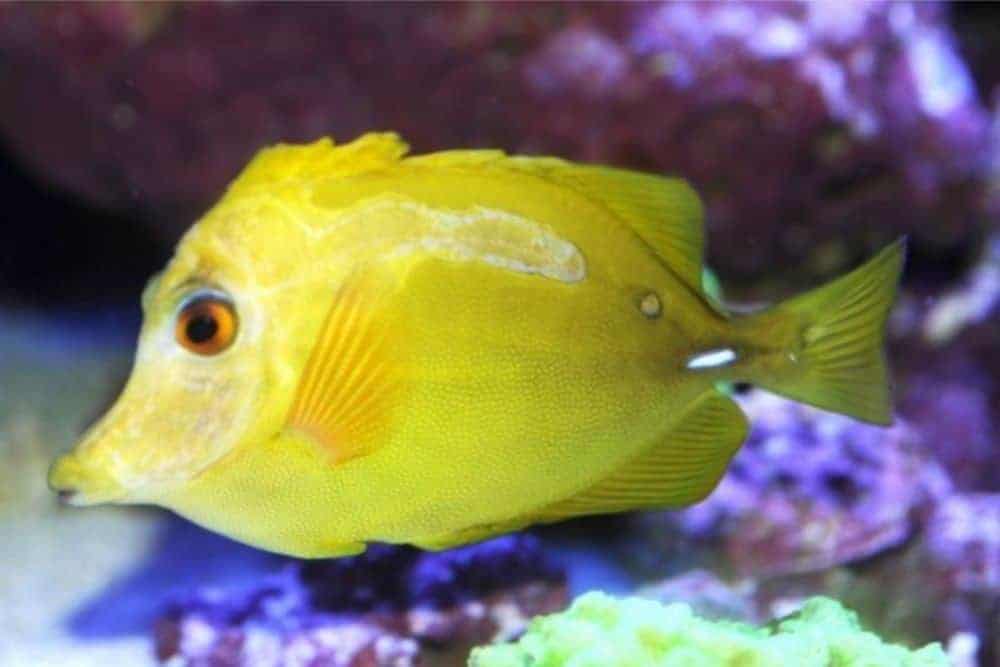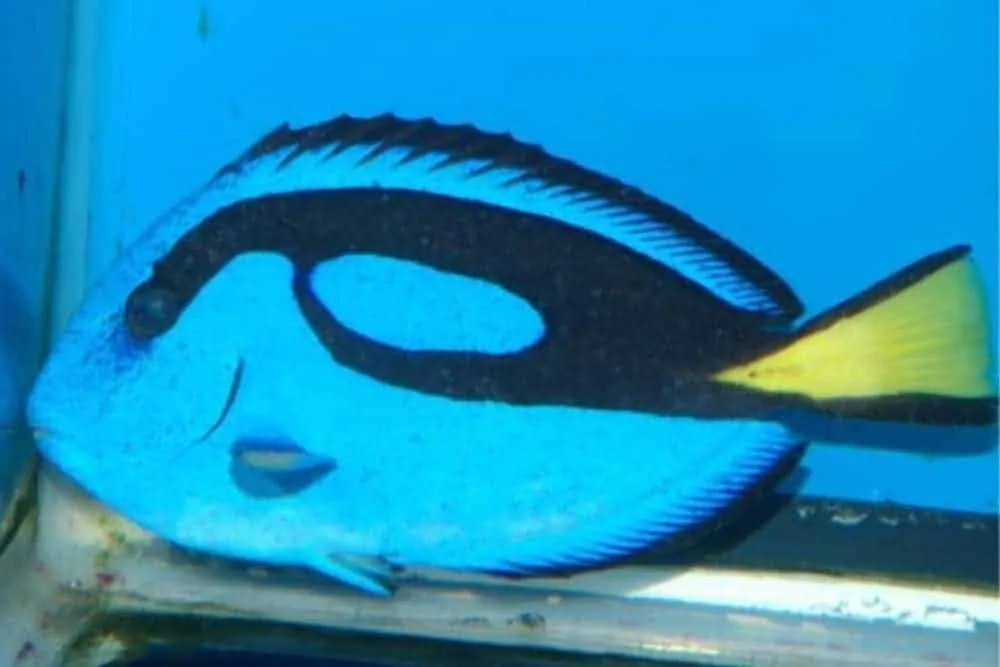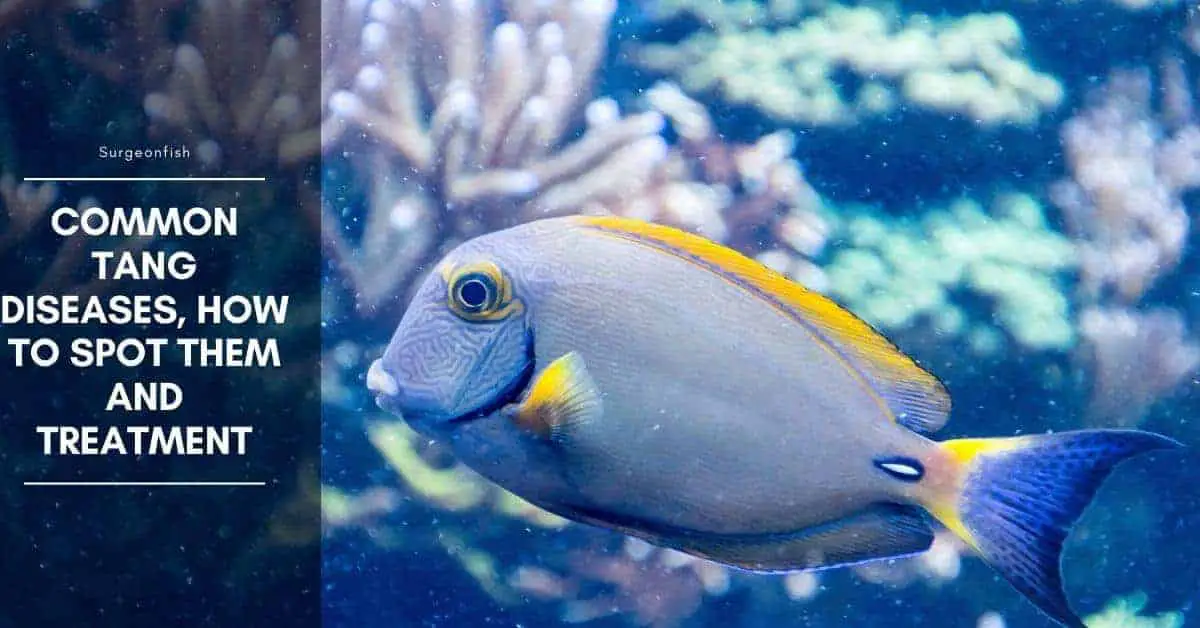Diagnosis of Tang diseases is generally easy in terms of initial impression: Sick fish are obviously out of sorts, swimming erratically to not at all, not eating, showing evidence of torn fins, blemishes on their bodies. Your job is to be keenly observant, looking during feeding, maintenance to assure all your fishy wards are present, feeding, and generally getting along.
Most common Tang disease conditions and proscribed means of treatment
Environmental diseases
Caused by unsuitable habitat influences of many sorts. Acanthurids live on and above reefs; require reef-quality conditions to do well. Too much metabolite, including any measurable ammonia or nitrite, too high/low or vacillating temperature, lighting left on too long, and so much more… can be debilitating to the extent where your livestock fall prey to pathogenic disease or succumb to stress outright. The solution is, of course, to be vigilant concerning the make-up of your system, its livestock, to ward against poor conditions and correct those that you do detect.

Nutritional
Tangs are amongst the most susceptible fishes to HLLE (Head and Lateral Line Erosion Disease); other nutritional deficiency syndromes, indeed, its uncommon to not be able to observe some manifestation of long term lack of nutrition amongst these fishes. More’s the shame for this situation as keeping Tangs nitrified isn’t all that challenging.
One need only follow the outline offered above in the Foods/Feeding/Nutrition section presented here: Provide palatable, nutritious foods at least thrice daily; avoid terrestrial greens, soak said foods in a vitamin/HUFA mix occasionally, or simply (as marine fishes drink their environment) add it to the water as a part of regular maintenance.
API STRESS COAT Aquarium Water Conditioner 16-Ounce Bottle
Tetra AquaSafe Plus, 8.45 Ounces, aquarium Water Conditioner And Dechlorinator, Model Number: 46798162681
$10.19 (as of December 12, 2025 08:01 GMT +03:00 - More infoProduct prices and availability are accurate as of the date/time indicated and are subject to change. Any price and availability information displayed on [relevant Amazon Site(s), as applicable] at the time of purchase will apply to the purchase of this product.)API TAP WATER CONDITIONER Aquarium Water Conditioner 16-Ounce Bottle
$8.48 (as of December 12, 2025 08:01 GMT +03:00 - More infoProduct prices and availability are accurate as of the date/time indicated and are subject to change. Any price and availability information displayed on [relevant Amazon Site(s), as applicable] at the time of purchase will apply to the purchase of this product.)Bumpy stomachs are not a worry with these fishes, they fill up and poop out a copious volume very regularly, often showing the gravel and sand grit that they’ve swallowed as their stomachs decrease.
Social
The usual suspects; large Basses and Wrasses, Eels, Angels, territorial Clownfishes and other predators will eat your Tangs; much less likely in large-enough systems for them to get and stay away. Surgeonfish are also subject to getting poked and spined by other fishes, including Scorpionfish and their relatives and definitely other Acanthuroids. The guideword here is “observation” on your part; you keeping a keen eye out for overt aggression that is trending toward actual damage. Tangs have remarkable “powers of regeneration” but can be so-damaged in interactions that they succumb to perishing.
Trauma
Damage from physical and chemical means takes several forms: Decompression injury, finger marks occur often with Acanthuroids; collectors being firm in their grasp of Tangs through nets and bare-handing of specimens at all times. Note has been made re regeneration from damage, disease; I’d also add that treatment for physical damage includes vitamins and Beta Glucan.
Pathogenic Disease
Just imported Tangs, and ones mixed in systems with the same invariably have a mix of internal and external parasites. Fluke/Trematodes can often be seen “flying off” Surgeons that are simply pH adjusted freshwater dipped/bathed. I am a huge fan of such preventative measures, including the use of a modicum of formalin, aeration.

Other chemical treatments abound for internal and external worm parasites; the Anthelminthics Praziquantel, Levamisole and others. DO read re their careful use if you are going to employ these; they do have their dangers if/when applied in main/display vs. dedicated treatment systems.
Treatment
Crypt and Amyloodinium, the twin scourges of coral reef fishes are very common in the keeping of Surgeonfishes; in fact, they’re often labeled as “ich magnets”; particularly some notorious species (Powder Blue and Browns, Achilles…). Many stores/LFS maintain a titer of copper in their systems to fight off external parasite issues and pest algae proliferation. Unfortunately, too long copper exposure is damaging long-term to Surgeonfishes, resulting in neuromast destruction/HLLE and often killing off their needed gut fauna. Unless there is a source (fresh poo of use from others to re-inoculate) their health will continue to disimprove over time. Treatment of Protozoan parasites should be accomplished via the use of Quinine compound; my fave Chloroquine Phosphate (CP).

Hi, my name is Sean, and I’m the primary writer on the site. I’m blogging mostly about freshwater and saltwater aquariums, fish, invertebrates, and plants. I’m experienced in the fishkeeping hobby for many years. Over the years I have kept many tanks, and have recently begun getting more serious in wanting to become a professional aquarist. All my knowledge comes from experience and reading forums and a lot of informative sites. In pursuit of becoming a professional, I also want to inspire as many people as I can to pick up this hobby and keep the public interest growing.
Read more about Sean.
Please join also my Facebook group.




















